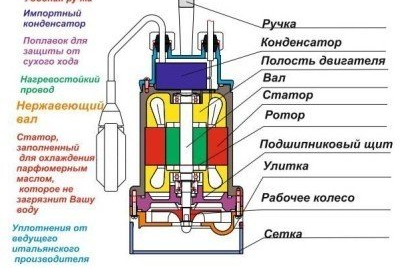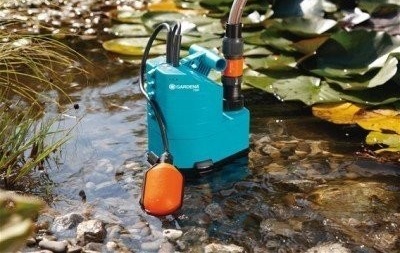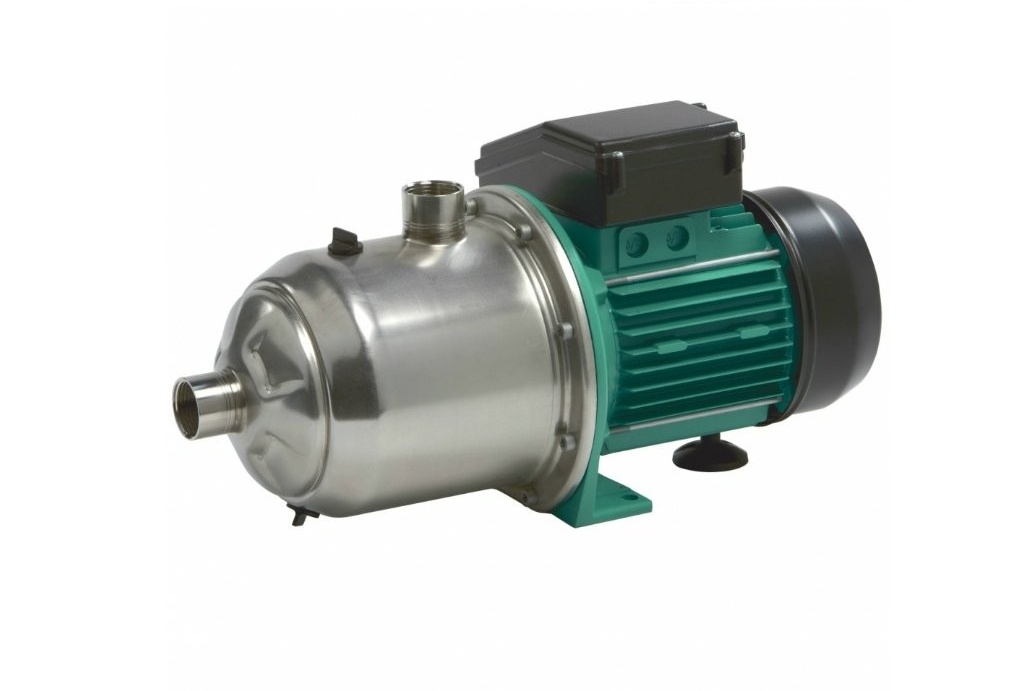How to choose a drainage pump: what to look for when choosing a unit?

No one will argue that water is vital for a person. However, there are times when it causes a lot of trouble. During the period of snowmelt or heavy rains, excess water can cause a lot of damage to buildings, washing the foundation and flooding the basements. An irreplaceable assistant in such a situation can serve as a drainage pump. With its help it is not difficult to pump out excess water even having a certain degree of pollution.
Therefore, such an aggregate is indispensable in the countryside. In addition, it can be used to pump water from any tank, whether it be a pool or foundation pit. Therefore, when purchasing a unit, it is worth considering how to choose a drainage pump so that it performs all the tasks with maximum efficiency.
Content
The main components of the drainage pump
If you don’t particularly dig into the mechanism, the drainage pump device consists of an engine and a pump unit, which are placed in a sealed enclosure.
It is made mainly of stainless steel or sufficiently durable plastic. The impeller of the engine is equipped with blades and mounted on the rotor shaft.

The maximum size of solid particles permissible for keeping in the pumped medium depends on the size of the openings of the suction grate.
The pump unit absorbs water through special openings, the maximum size of the solid particles permissible for the content in the pumped liquid depends on the diameter of which. Most manufactured pumps are equipped with a float switch.
If you want to know how the drain pump works, watch a video of this process.
Such units can be used for both domestic and industrial work. Before deciding which drainage pump to choose, you need to find out the preferred conditions of use. This is necessary in order to determine the complete set of the mechanism. The main characteristics that you should pay attention to when choosing a drainage pump are as follows:
- finding a suction port; For professional units, this feature is unimportant. They can be located in any position. For domestic pumps it is better if the hole is located below. This will allow maximum pumping of water from the bottom of the tank.
- pump housing; For industrial use, mechanisms with a cast iron body are available. They are reliable enough, but have a lot of weight. Household pumps, thanks to a housing made of steel or plastic, are more compact and light. However, they have sufficient power to perform their functions.
- working chamber; For pumping water without impurities, its size is unimportant. For liquids containing large fractions, the size of the working chamber must be sufficient width for their passage. Otherwise, the unit mechanism may be damaged.
- unit design; industrial models have a more complex design, which requires the involvement of a specialist in filter replacement and maintenance. Maintenance of domestic pumps is carried out independently.
- suction device; centrifugal mechanism for suction allows you to use a pump to pump out water with solid particles without reducing power.
What material should the parts and body be made of?
This is an important feature for such a unit. Not only the price of the pump depends on it, but also the reliability and its service life. According to the material of manufacture, pumps are:
- all plastic; They are the least durable, but they are cheaper than other analogues.
- plastic with stainless steel working mechanism; Due to this, the unit wheel is not exposed to aggressive environment and corrosion.
- stainless steel or cast iron; Lead the rating of drainage pumps for durability due to the resistance of all parts to any damage.
Blade-type aggregates are divided according to the material from which the parts are made. The blades for the pump are performed:
- stainless steel; cheaper option.
- from technopolymer, which is more resistant to corrosion and wear, but also costs more.
Installation Classification
According to the installation method, drainage pumps are divided into:
- superficial; They pump water even from great depths. They are mainly used in pumping stations for connection to a well or well.
- semi-submersible; The unit body is partially immersed in the pumped liquid. It is used to pump water from cellars or small bodies of water.
- submersible; The pump is completely immersed in the pumped medium. Used to drain pools and basements.
Pump Life Extension Devices
During operation of the drainage pump, overheating of the engine may occur, which could result in damage to the unit. It also negatively affects the life of the mechanism when its operation is at too low a level of pumped medium. To avoid overheating of the engine will help the thermal relay, shutting down the unit when the temperature rises.
A drain pump with a built-in float switches off automatically when liquid drops during pumping. It can also turn on automatically when the room is filled with water. This will help to avoid significant flooding in the absence of hosts during the flood.

On and off sensors in pumps with an aquasensor control the operation mode of the unit, devices are regulated independently of each other
Developments in this area are not standing still and units with new aquasensor technology are already on sale. Thanks to the regulator, you can set the required permissible water level for switching the unit on and off. In this case, the minimum level can be set at 5 mm. Such pumps can be installed in narrow tanks where float switch operation is not possible.
What technical characteristics to focus on?
Performance is the most important aspect.
To determine the required pump capacity, you should find out the scope of the proposed actions. That is, how much water must be pumped out over a certain period of time. For example, household drainage pumps can pump out no more than 180 liters per minute. For the tasks of pumping out excess water from the basement or draining the pool, such pumps are quite suitable.
However, you need to know that the higher the upper reset point, the greater the loss in performance.
The necessary pressure of the device
To calculate the pressure necessary to perform a specific task, you need to know the height and distance at which water is supplied. Height is defined as the distance between the immersion level of the pump and the point of water outlet from the nozzle. This takes into account that there is a loss of one meter of pressure for every ten meters of hoses or piping.
Pump selection based on pumped medium
Each pump has a specific specification, which indicates the size of the impurities contained in the water, which this unit is able to skip without compromising performance.
If the aggregates are distributed according to these signs, we obtain the admissible size of the impurities:
- up to 5 mm; used for clean or slightly contaminated liquids. Suitable for draining rain tanks, pools.
- 5-25 mm; It is used for medium-contaminated liquids with impurities not exceeding 25 mm. With their help drain pits or wells.
25-38 mm
- ; It is used for dirty, rain and melt water.
Typically, household drainage pumps for water are used in environments with a temperature of not more than 40º. Therefore, they are not suitable for pumping hot water. For such functions, industrial units are selected that cope even with such a task.
In the market, drainage pumps for summer cottages are presented in a wide range. Therefore, if you need to perform several tasks: to drain the pool and pump out water from the basement, you do not need to purchase a unit for each process separately. It is enough to choose one, but a reliable pump. In this case, you should focus on the most time-consuming of the processes.



